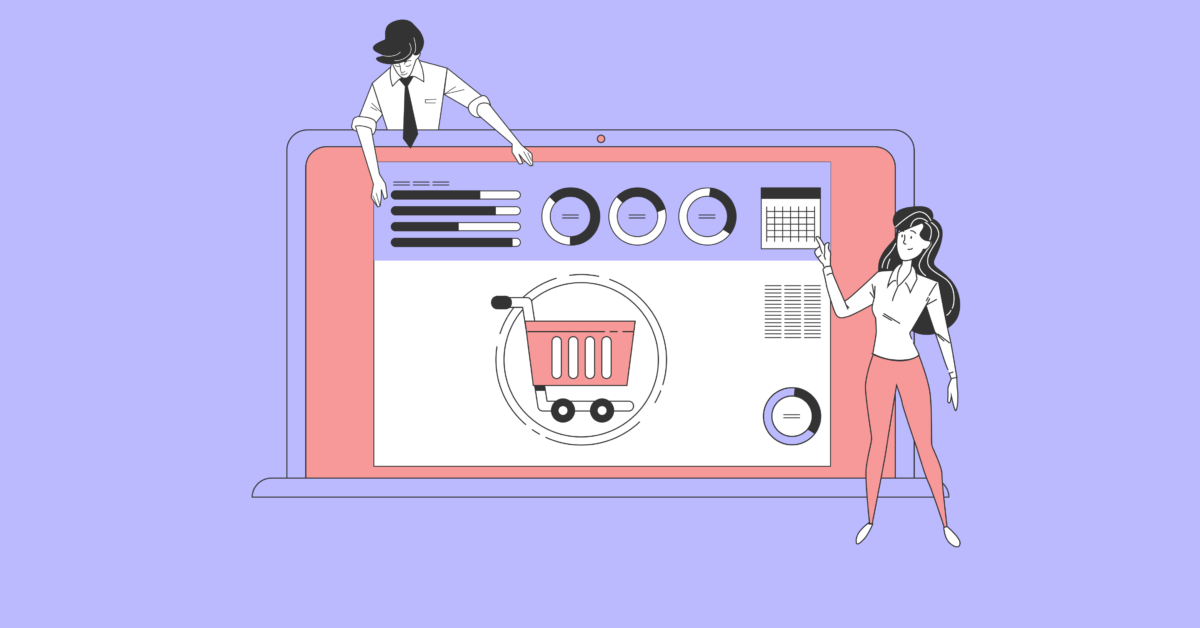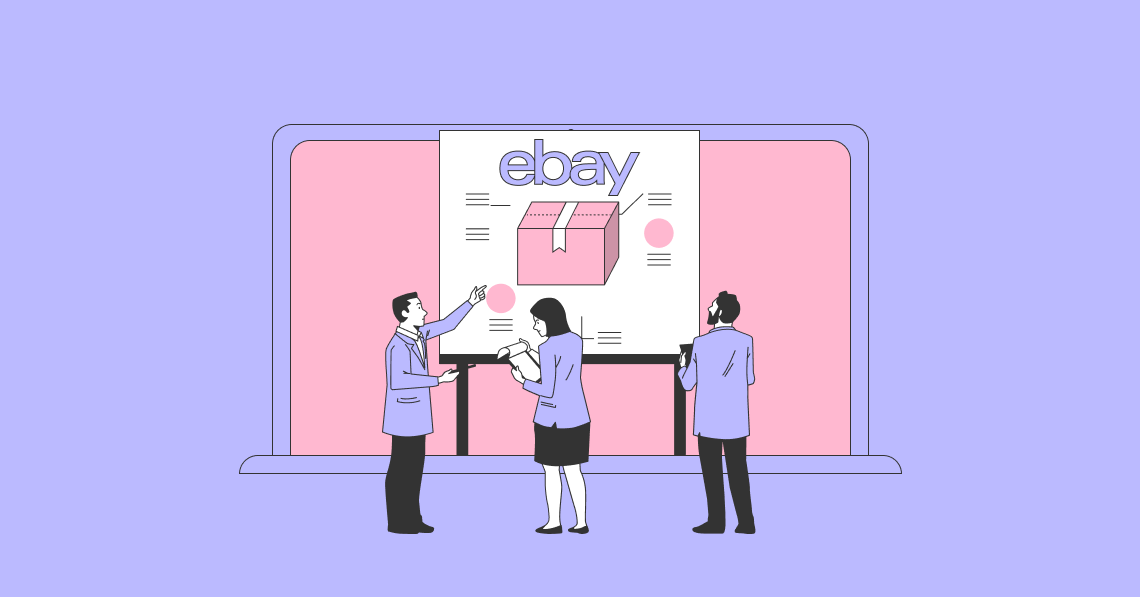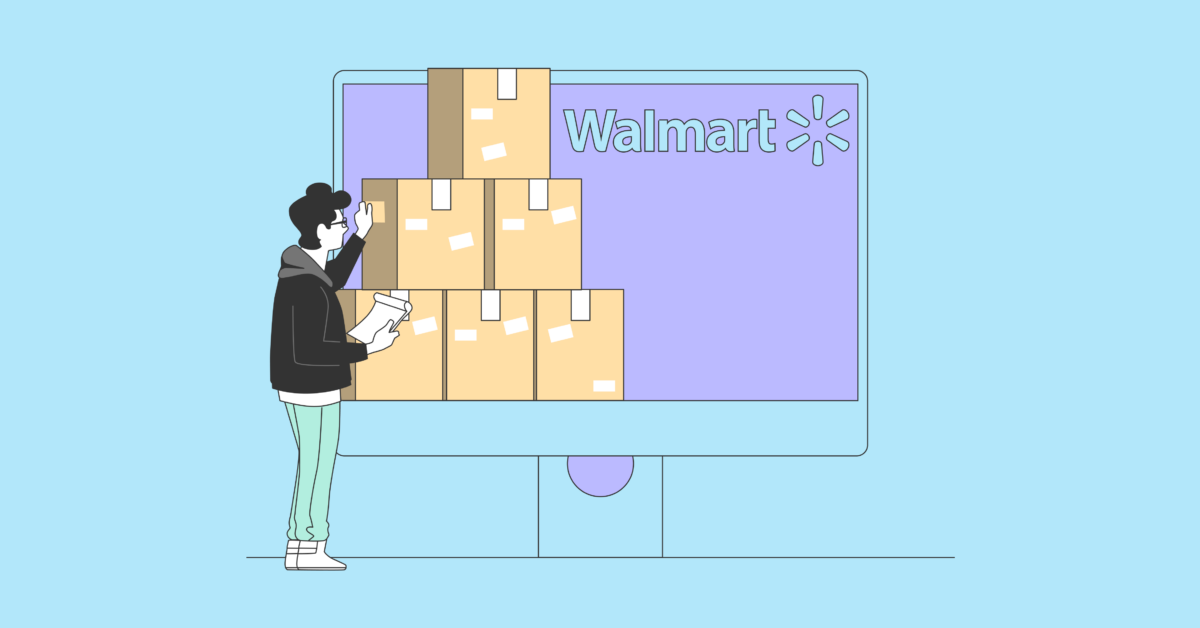We have previously looked at the bigger picture of buying advertising on Amazon in What is Amazon Advertising? As we saw in that post, there are many different ways you can choose to promote your product on Amazon. Some of the most popular advertising types include Sponsored Brands Ads, Sponsored Display Ads, Display Ads, Video Ads, Stores, and Custom Ads. However, the most common type of ads you will see on the platform is Amazon Sponsored Products Ads.
A Guide to Amazon Sponsored Products Ads:
What are Amazon Sponsored Products Ads?
Amazon Sponsored Products are cost-per-click (CPC) ads promoting individual product listings on Amazon. Although they are clearly labeled as sponsored products, most visitors to Amazon view these as genuine search results (because Amazon considers relevance an important factor when deciding which Amazon Sponsored Products it includes in its search result listings.
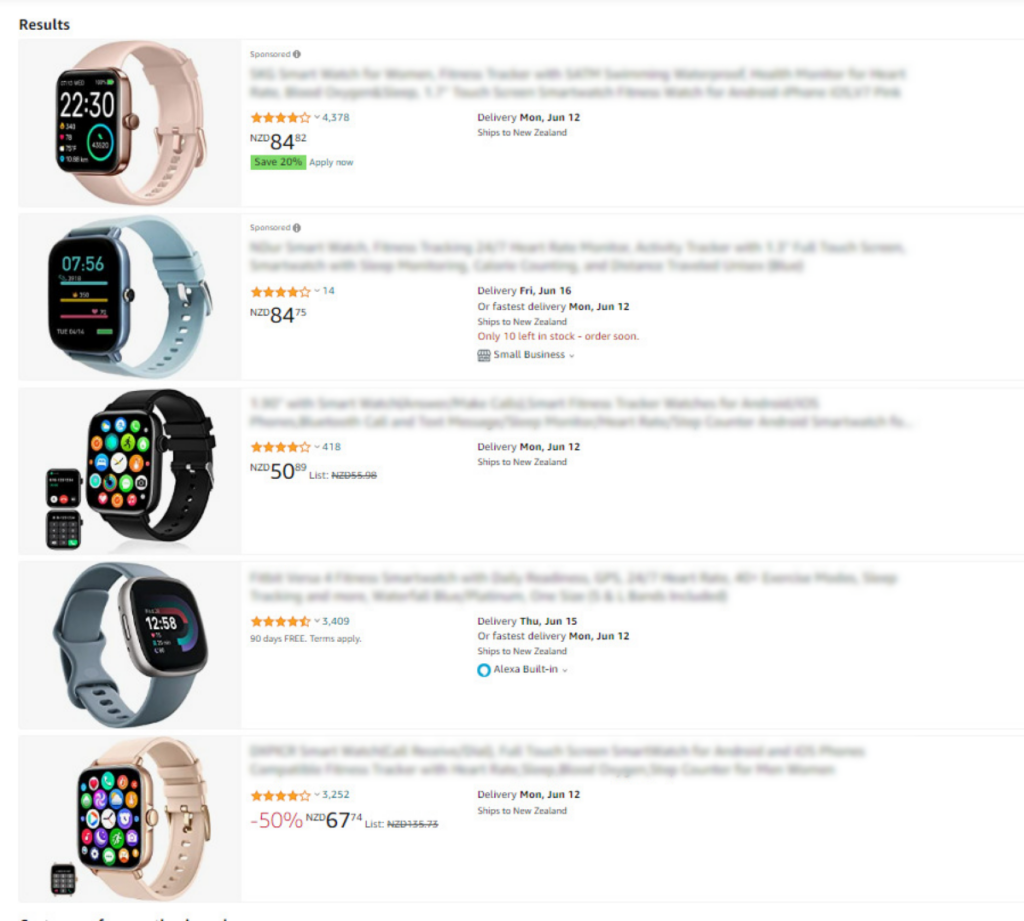
The above picture shows the first five products listed (on Amazon.com) from a search for “smartwatches”. At first glance, they all look like genuine organic search results – each item is a smartwatch that Amazon sells (either directly or on behalf of an Amazon Seller). However, you will notice the small word “Sponsored” at the top of the first and second listings. These are examples of Amazon Sponsored Products – still genuinely relevant for the searcher’s intent, but “helped” to the top of 2,000+ products in the listings.
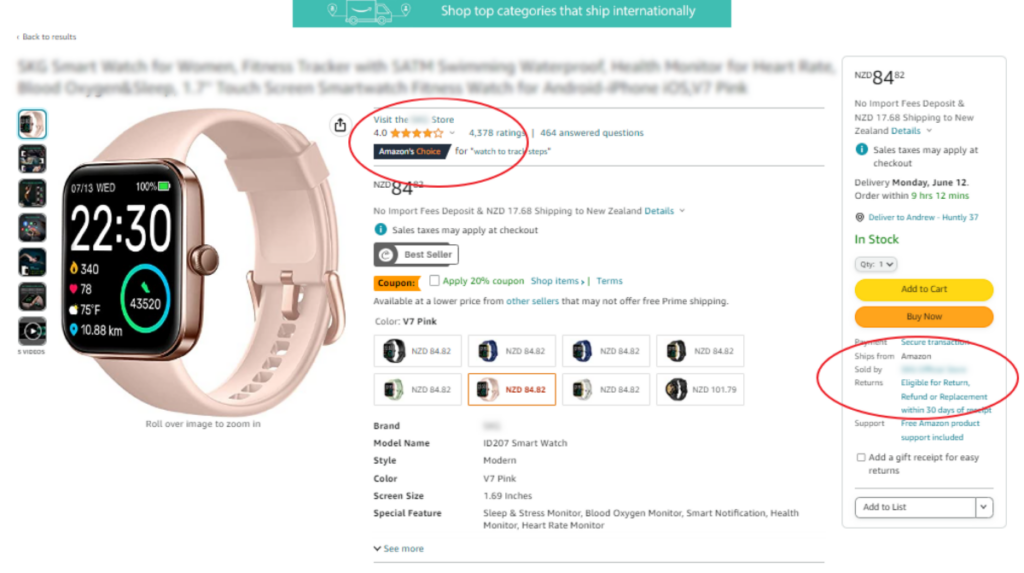
If you were to click on the first listing shown (the SKG Smart Watch for Women Sponsored Product) you will notice that it clearly identifies the seller near the top – “Visit the SKG Store”. Also, in the right sidebar, it shows “Sold by SKG Official Store”). In all other respects, it looks just like any other Amazon listing. The above screenshot shows just a tiny portion of the complete product page, which includes many additional sections, including multiple images of the watch, in-depth lists of features and benefits, and a comparison chart with other similar products.
Where do Amazon Sponsored Products Ads Show?
Sponsored Products Ads show in two places:
- In search results on Amazon – Amazon spreads them across the beginning, middle, and end of searches, and the specific placement for your ad depends on how much you have bid (to pay) compared to other advertisers
- In display carousels on product pages.
We have shown an example of an Amazon Sponsored Product showing at the beginning of a search above.
Further down the product page for the SKG Smart Watch for Women, there are various product carousels, including one for Products Related to this Item. The first item showing in this carousel is an Amazon Sponsored Product ad for another similar SKG watch.

Why Use Amazon Sponsored Products Ads?
The main purpose for using Amazon Sponsored Product ads is to help your product stand out from potentially thousands of competitors when somebody searches for your product type. You target shoppers who are looking for your type of product, although not specifically yours. Therefore, you should focus on keywords or product types for which your product makes a good fit.
Many brands have discovered that an investment in Amazon Sponsored Products ads has acted as a catalyst to a significant revenue driver. Imagine the effects on your sales if you can use these ads to drive your products up from many pages down an organic search (which few if any consumers will see) to somewhere on the front page of an important search.
Although Amazon Sponsored Products ads use a PPC model, much like Google and Facebook advertising, they have some important differences. Although paid ads on Google or Facebook can look similar to surrounding organic content, there is no real requirement that they do. For example, you might notice that many of the Sponsored Results in Google searches only have a superficial connection to the topic of the search. And in Facebook’s case, there is no search at all – Facebook ads appear as content interspersed with organic posts in a newsfeed. Amazon insists, however, that Sponsored Product ads appear naturally in a search (or on a product page). if they aren’t relevant to a search or product, they won’t appear. This means that most of the people who view Amazon Sponsored product ads have a genuine interest in purchasing a product, possibly your product. Google and Facebook ads, in comparison, target a higher-level and more diverse audience.
This means that in most situations, Amazon Sponsored Products ads will be cheaper than their Google and Facebook equivalents, and appear before a much smaller audience, but these people are far more likely to become potential customers.
Who Can Use Amazon Sponsored Products Ads?
Anybody who trades on Amazon can purchase Sponsored Products ads to increase the visibility of their products to potential purchasers. This includes both vendors (who sell their products to Amazon) and sellers (who sell directly to customers on the platform). Indeed, Kindle Direct Publishing (KDP) authors can even buy Amazon Sponsored Products ads if they want to promote their books on the platform.
You might wonder why vendors would spend money on promoting products that they have already sold to Amazon. This is because, the more visible the product is in searches, the more sales Amazon will most likely make, and in turn, the more replacement product they will want to buy from the vendors.
Amazon has restricted Amazon Sponsored Products ads from some categories, however. It has also issued an extensive list of prohibited content – everything from including Amazon trademarks and ASCII art to content glorifying smoking or promoting vandalism. It even restricts content that asks questions of or speaks directly to the customer, for example, using the word "you/your" in your copy, (for example, “Are you looking for xxx, try this" or “Not getting the weight loss results you want?"). This makes sense, of course, when you consider that Amazon wants your ad to look like an organic search listing, not a hard sales promotion.
Overall, Amazon expects all Amazon Sponsored Products ads to meet these criteria:

- they must be suitable for a general audience
- they must accurately reflect the content of the landing page
- they must be in the primary language of the Amazon site on which the ad is displayed
- they must be clear and accurate so that customers receive correct information before engaging with an ad or deciding to purchase a product
- they must only promote products that you either own or are authorized to resell or distribute
They also set a few formatting requirements for your ad, including:
- all images and videos must be legible and of a high resolution
- animation is only permitted in videos
- creatives should not interfere with the legibility of ad templates
If you want your ad to appear in the Featured Offer section (Buy Box), Amazon additionally requires that:
- your products must be available (in stock)
- you must have been selling for 90 days
- your product price should not significantly exceed the average price of the previous weeks to two months
Amazon Sponsored Products Ads Use a PPC Model
We have previously written an Ultimate Amazon PPC Strategies and Best Practices guide. As we wrote there, Sponsored Products ads are merely one type of PPC advertising that Amazon provides for sellers (and sometimes vendors).
PPC advertisers bid a price to place their ads in front of a captive audience. Amazon’s behind-the-scenes advertising machine gives whichever advertiser has the highest bid the right to place an ad in front of a consumer in a prime position. However, as with all PPC ad systems, this all happens in a fraction of a second, making it invisible to the consumer searching Amazon.
Visitors to Amazon go there for two reasons:
- Researching a product
- Buying a product
Although these represent consumers at two different stages of the Purchasing cycle, there is often little gap between somebody researching a product on the platform and then deciding to purchase it.
Once somebody is near the bottom of the purchasing funnel, they are likely to have a good idea of what they want to buy, although not necessarily a brand or preferred product. These consumers are likely to search for a product type or category. This explains why many advertisers find Amazon Sponsored Product ads to be successful. They bid to have their product appear near the top of relevant searches made by people intending to buy a product like their own. Alternatively, advertisers can catch those even further down the purchasing funnel by placing ads on product pages, possibly those of their competition indicating how their product can meet their needs better.
In many product categories competition can be fierce, however. In this case, multiple sellers will try to promote their products in the coveted front-page positions, and Amazon uses bidding to determine who wins the best slots.
Amazon charges for its advertising using Cost-Per-Click (CPC), i.e., advertisers will only have to pay Amazon when somebody clicks on their ad. When you make a bid for your Amazon Sponsored Product ads, you are stating the maximum you will be prepared to pay every time somebody clicks on your ad.
How to Create an Amazon Sponsored Products Ad
Although you set up your ads and ad copy in advance, the most important part of Amazon Sponsored Product ads (and indeed Sponsored Brand and Sponsored Display ads) occurs in real-time when someone makes a search or goes to a product page on Amazon. The process typically follows this pattern:
- A shopper searches Amazon for a product type relevant to a product you sell on the platform. Alternatively, they may go to a particular product page you may have targeted (this may even be for one of your own products).
- Amazon compares bids received from advertisers for relevant ads targeting the search keyword (or specified product).
- The ad with the highest bid wins the auction (assuming it meets Amazon’s conditions and is relevant to the search/product page).
- Amazon then displays the highest bidder’s ad near the top of the product search results (or in the prime spot in the Buy Box of the selected product page) and places other bidders’ ads (in order of bid) in other slots on the search result/page.
- The shopper clicks on any ad that interests them to learn more (and hopefully follow through with a purchase)
- The winning advertiser pays an amount equivalent to the second-highest bid (not their own highest bid figure) plus one cent. Other bidders who make the cut pay one cent less than the bid of the advertiser with the slot above them.
Steps to Take Before the Bidding Auction
While much happens in the fraction of a second when a viewer makes their search (or selects a product page), much has already occurred prior to that point. For a start, you can’t advertise on Amazon until you are set up as a seller and have your product page and logistics sorted out. If you haven’t already done this, our In-Depth Guide to Selling on Amazon can help you get started on the platform, ready to advertise your products.
If the aim of your Amazon Sponsored Products ads is to attract people to your product pages, you will need to set up a Featured Offer that appears near the top of one of your product detail pages, which customers can buy now or add to their shopping carts. Amazon has a requirement that you can only buy Sponsored Product ads for products that are eligible to show a Featured offer.
You can then go to your Amazon Seller Central to set up your campaign and bid for ad spots. Some of the steps you need to go through include:
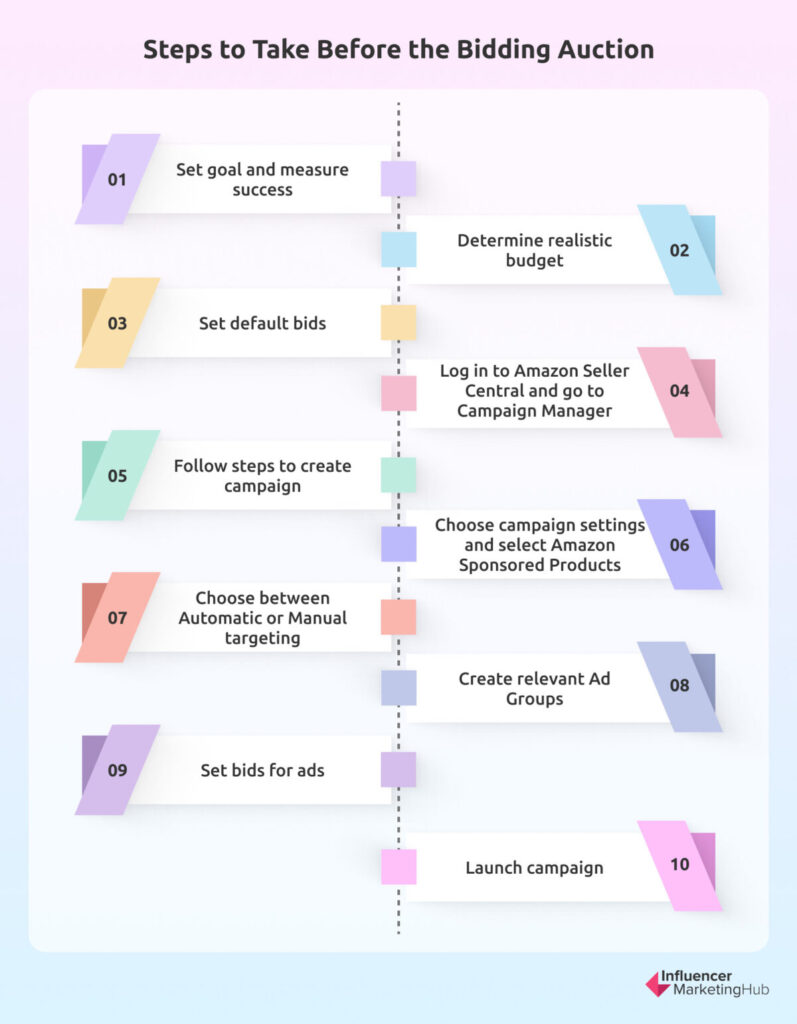
- Determine a goal for Your Amazon Sponsored Products Ad Campaign and a way to measure your success
- Decide on a realistic budget for your campaign – at least a daily ad budget, and possibly one for your whole campaign
- Decide on default bids for your ads – for more on this see, How to Improve Your Amazon Advertising Cost of Sales (ACoS )
- Log into Amazon Seller Central. Go to your Advertising tab and select Campaign Manager. Click on Create Campaign.
- Follow through with the requested steps. Begin by filling in your basic campaign settings (e.g., your campaign name, dates, budget, etc.).
- Remember to select Amazon Sponsored Products as your campaign type.
- Select between Automatic Targeting (Amazon will place your bids for you using its AI) or Manual targeting (if you’re more experienced you can select the targeting parameters yourself to fine-tune the results to your preferences).
- Create relevant Ad Groups, i.e., groups of ads sharing the same keywords or products. If you’re only promoting a single product, you may only have one ad in a single Ad Group.
- Set your bids – you may have worked out suitable bids previously. If you are uncertain, Amazon suggests $0.75 the first time you bid, and you can adjust this for future campaigns, depending on how successful you were in gaining top ad positions.
- Launch your campaign.
Wrapping Things Up
Having Amazon Sponsored Products can have a two-pronged effect. You can use it to direct relevant traffic to your listing, and hopefully make more sales that way. However, it can also improve your organic rankings. The extra paid traffic (and hopefully sales) you gain will attract the attention of Amazon’s AI, making it feel that your products are more popular than they were previously.
The AI, in turn, improves your organic rankings to reflect this improvement in overall visibility and popularity.
